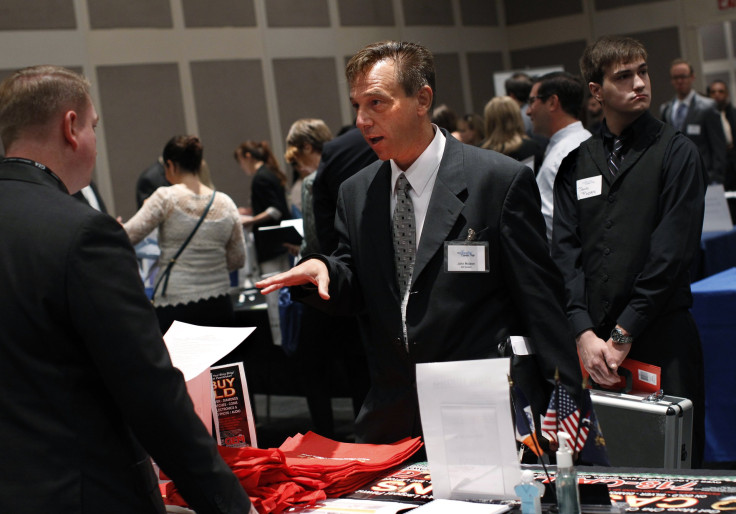US April Jobs Report 2013: Nonfarm Payrolls To Show Moderate Expansion, Unemployment Rate Unchanged At 7.6%

Another weak jobs report Friday is likely to fuel concerns that March’s disappointing payrolls figure was not a blip but a sign of true weakness in the U.S. labor market.
The Labor Department will release the April employment report on Friday at 8:30 a.m. EDT.
The consensus forecast is that employers added 145,000 jobs in April, including 160,000 gains in the private sector and 15,000 cuts by federal, state and local governments. While this is an improvement over the paltry 88,000 jobs created in March, it would still fall short of the monthly average of 200,000-plus jobs from November to February. The unemployment rate probably stayed at 7.6 percent, matching March’s reading as the lowest since December 2008.
Worries that the total nonfarm payrolls could miss expectations came after private payroll processing firm ADP announced Wednesday that businesses added just 119,000 jobs last month, well below the 150,000 that had been forecast. March’s print was also revised lower by 27,000 jobs.
ADP, however, has a mixed track record of predicting the BLS figures. Since ADP overhauled its employment report last October, it has missed the government figures by an average of 40,000 a month in either direction. This is somewhat better than the 58,000 average miss in the previous 12 months.
Dean Maki, chief U.S. economist of Barclays Capital, says that while he expects to see “some weakness in April employment growth due to the sequester, the underlying trends continue to suggest moderate but unspectacular expansion in payrolls.”
The U.S. economy grew at a 2.5 percent rate in the first quarter, but analysts do not expect that pace to last.
The slowdown in global economic growth appears to have hit American manufacturers in April. The ISM manufacturing index dropped to 50.7 in April, from 51.3 in March, erasing almost all of the gains seen over the first quarter, and it left the index reading dangerously close to the expansion-contraction level of 50, Capital Economics economist Amna Asaf notes.
Meanwhile, auto sales declined to 14.9 million in April from 15.2 million in March, according to Autodata. This was below the consensus forecast, and it was the softest result since last October.
For the second quarter, economists’ forecasts range between a 1 percent to 2 percent rate -- a slowdown that analysts pin on fiscal tightening in Washington.
To slash the budget deficit, lawmakers let a 2 percent payroll tax cut expire at the end of last year and left in place $85 billion in across-the-board government spending cuts, known as sequestration, which began on March 1.
The sequester likely reduced government jobs and weighed on private sector expansion. Although the government did most of its cost-cutting through furloughs, Bank of America Merrill Lynch’s Michael Hanson suspects there were also some outright job cuts. Moreover, the private sector will likely be impacted. At a minimum, it likely reduced hiring in those industries most closely exposed to the government, such as defense contracting.
There has been greater-than-normal seasonality in the past two months. March was particularly cold with snowfall in parts of the country, likely curbing economic activity. This would show up in retail and construction jobs in particular, which Hanson thinks were both held back in March due to the weather.
Friday’s jobs report is expected to show that average hourly earnings rose by 0.2 percent after being flat in March. Meanwhile, the length of the average workweek is expected to have held steady at a 9-month high of 34.6 hours. It’s important to note that this is just capturing the private side of the economy, and, hence, government furloughs will not show up in this measure.
© Copyright IBTimes 2024. All rights reserved.






















